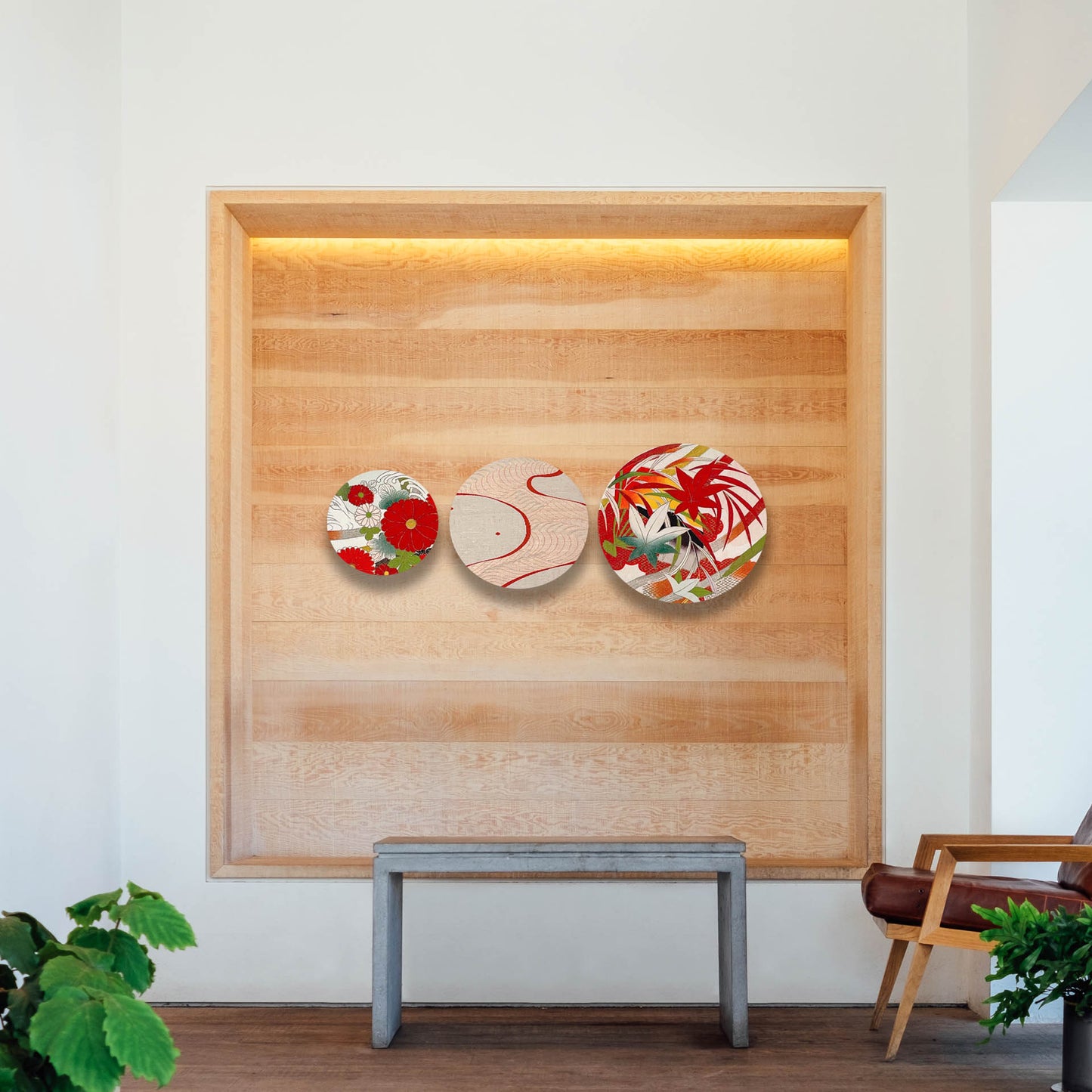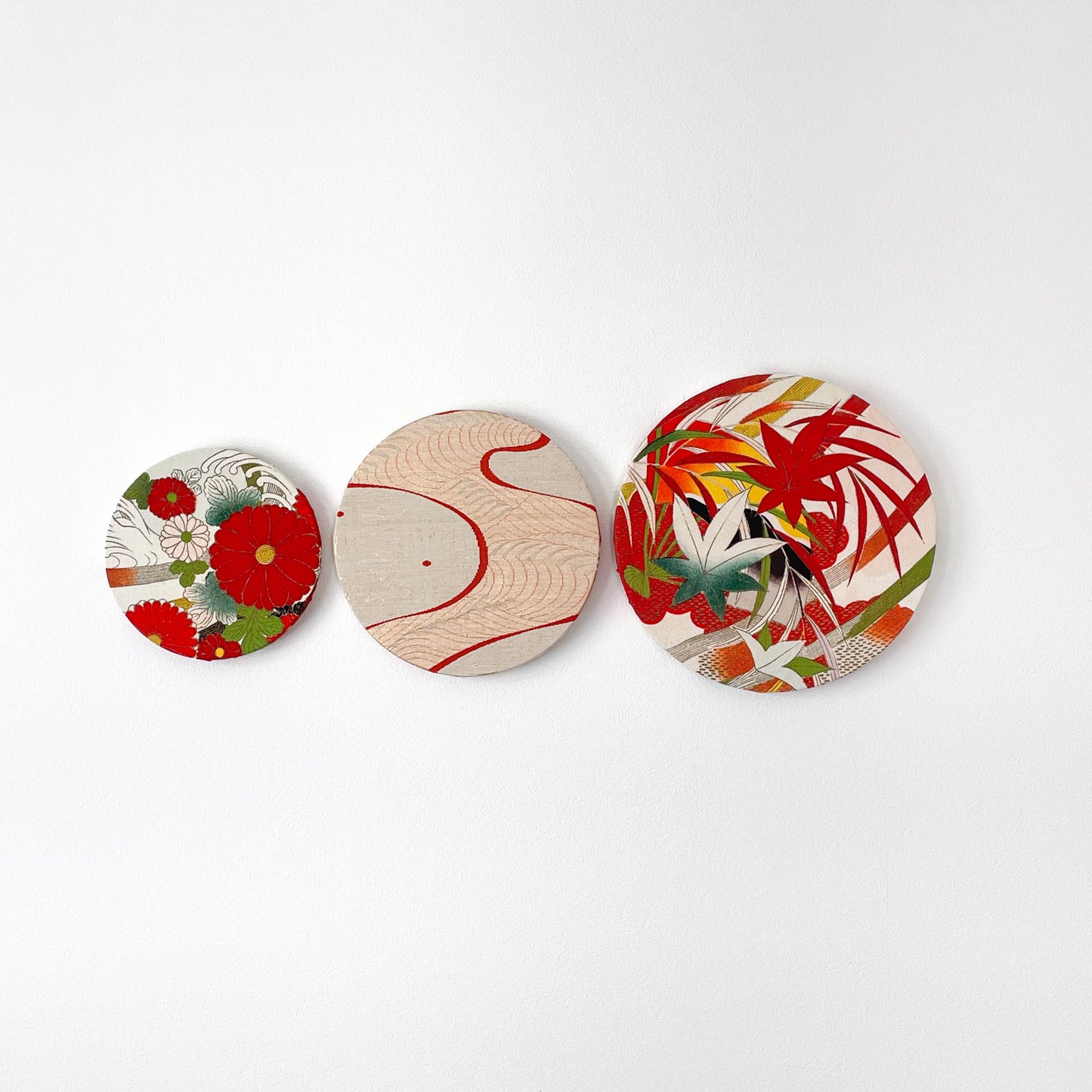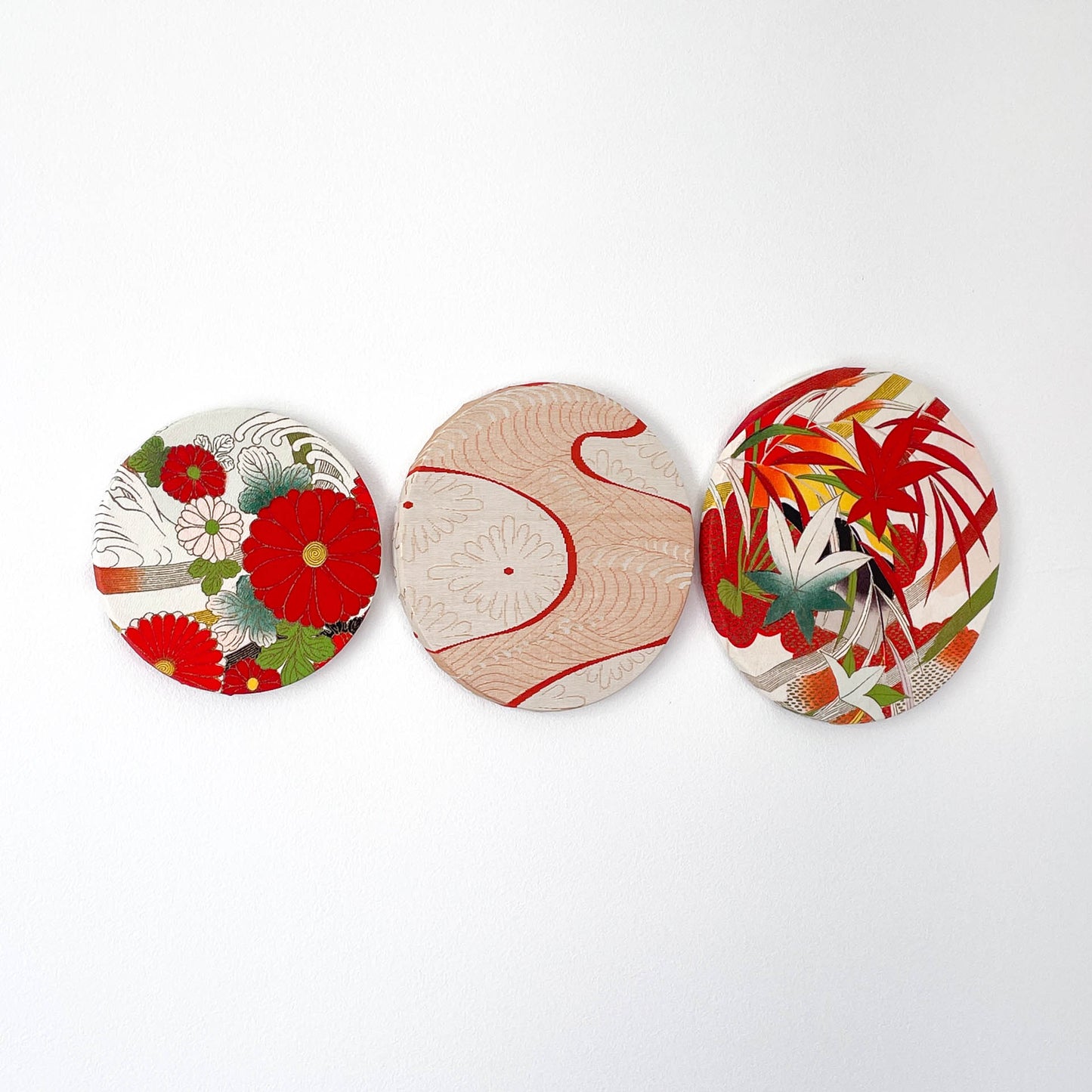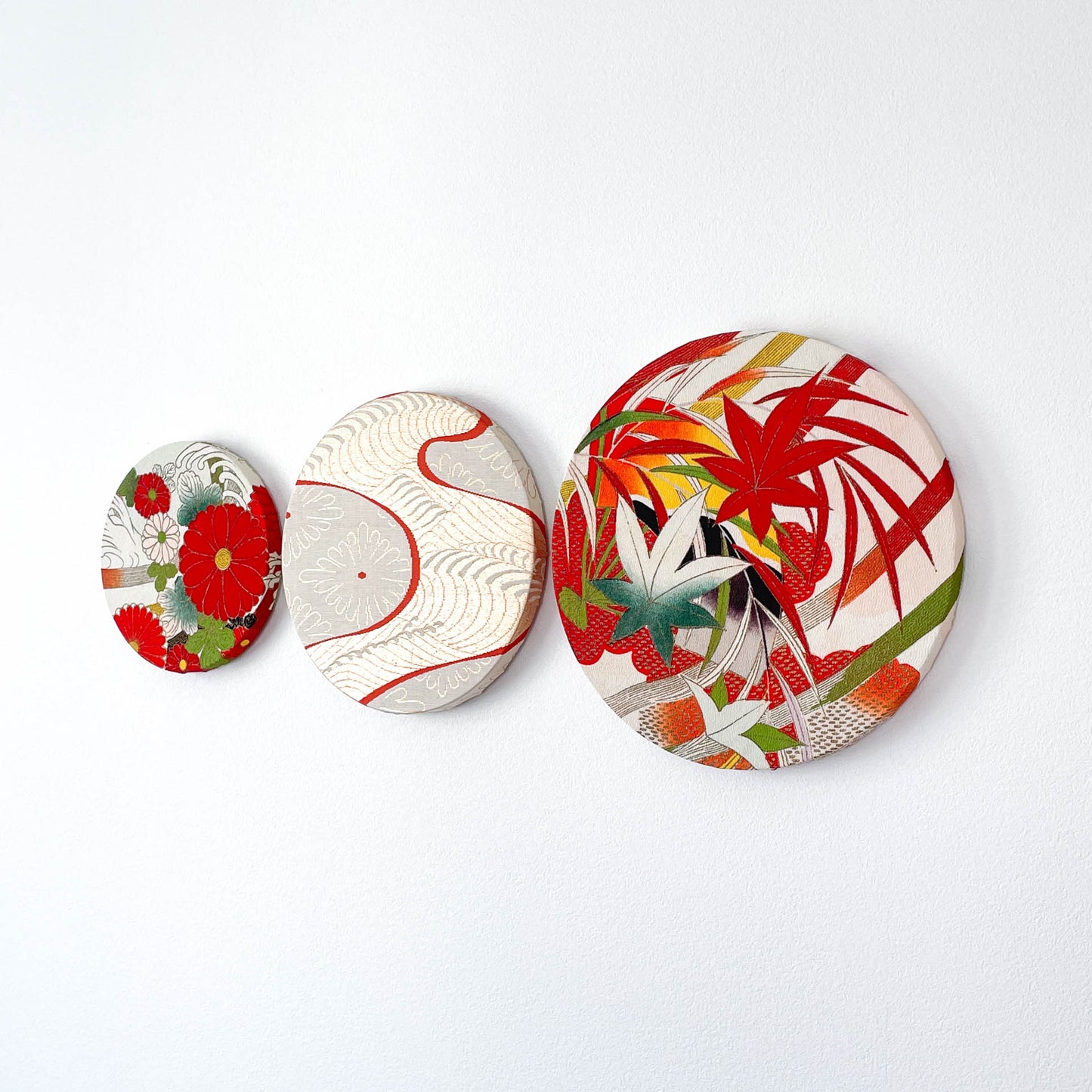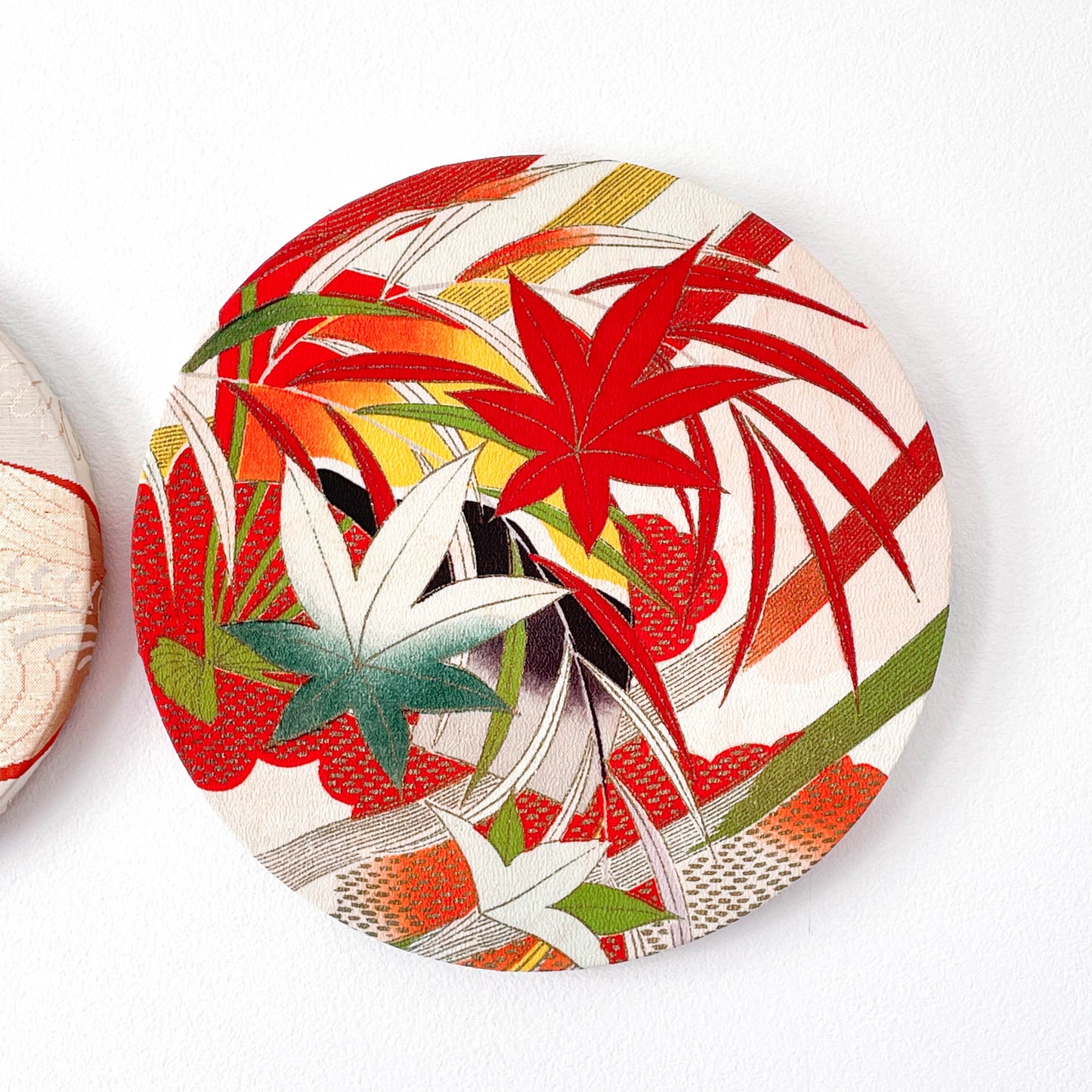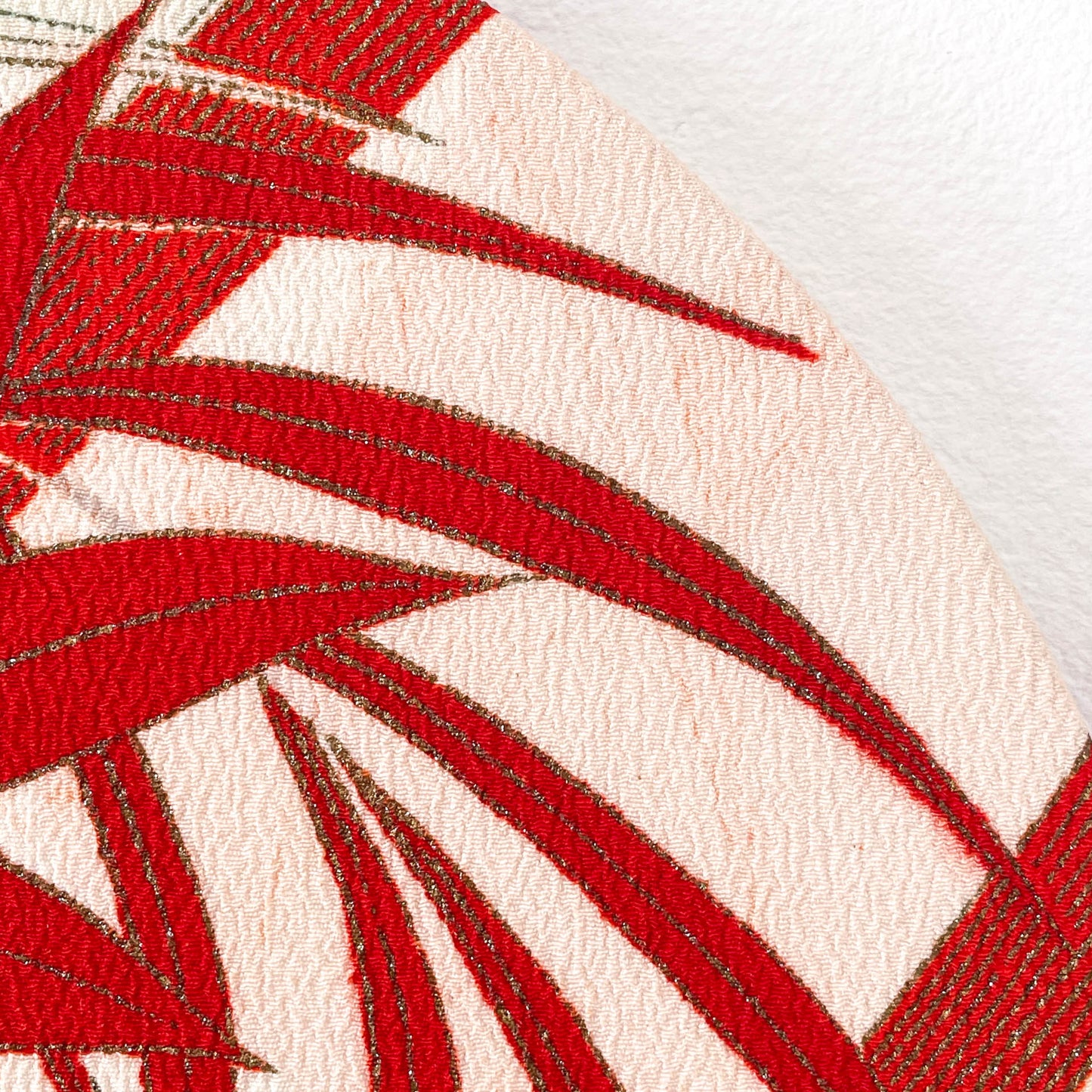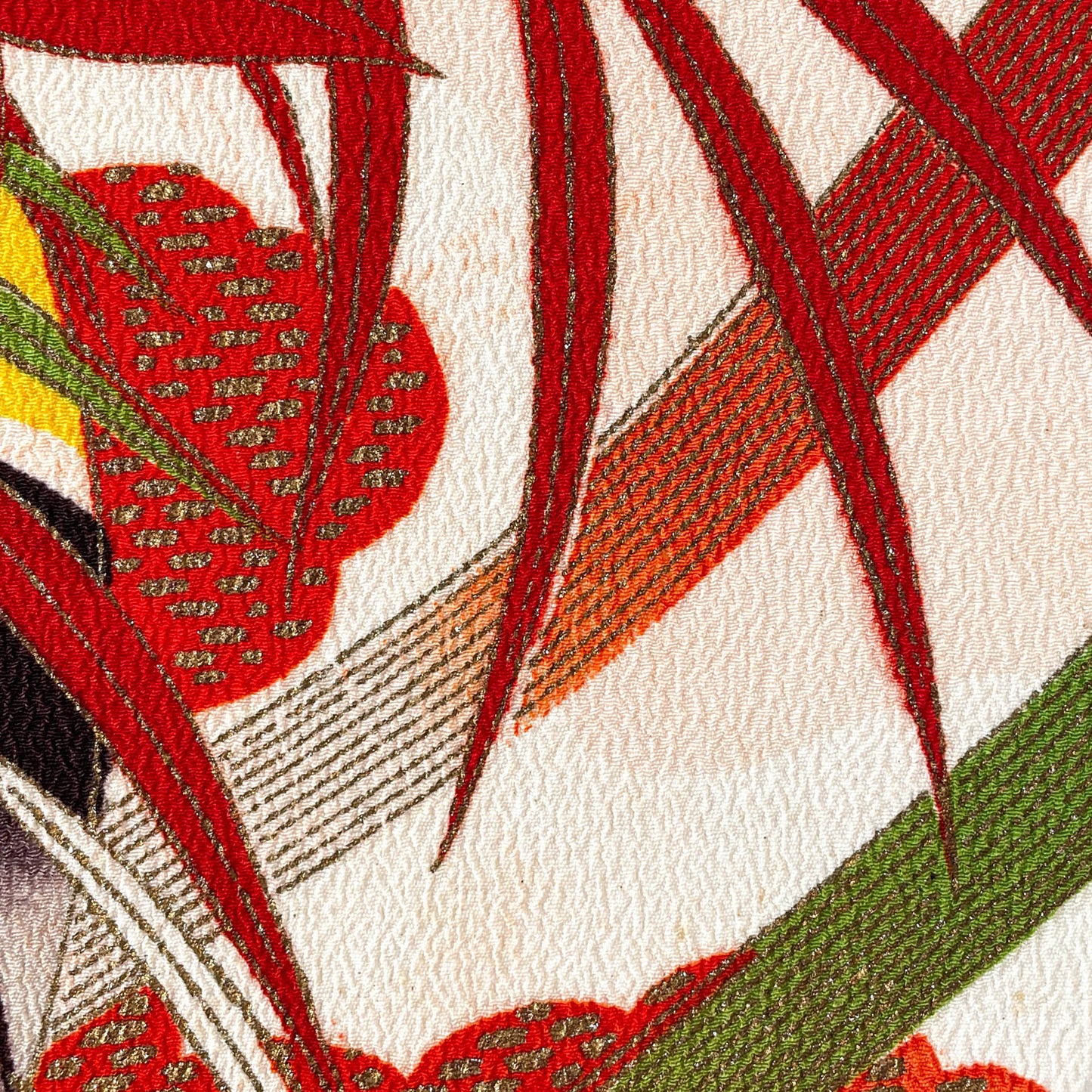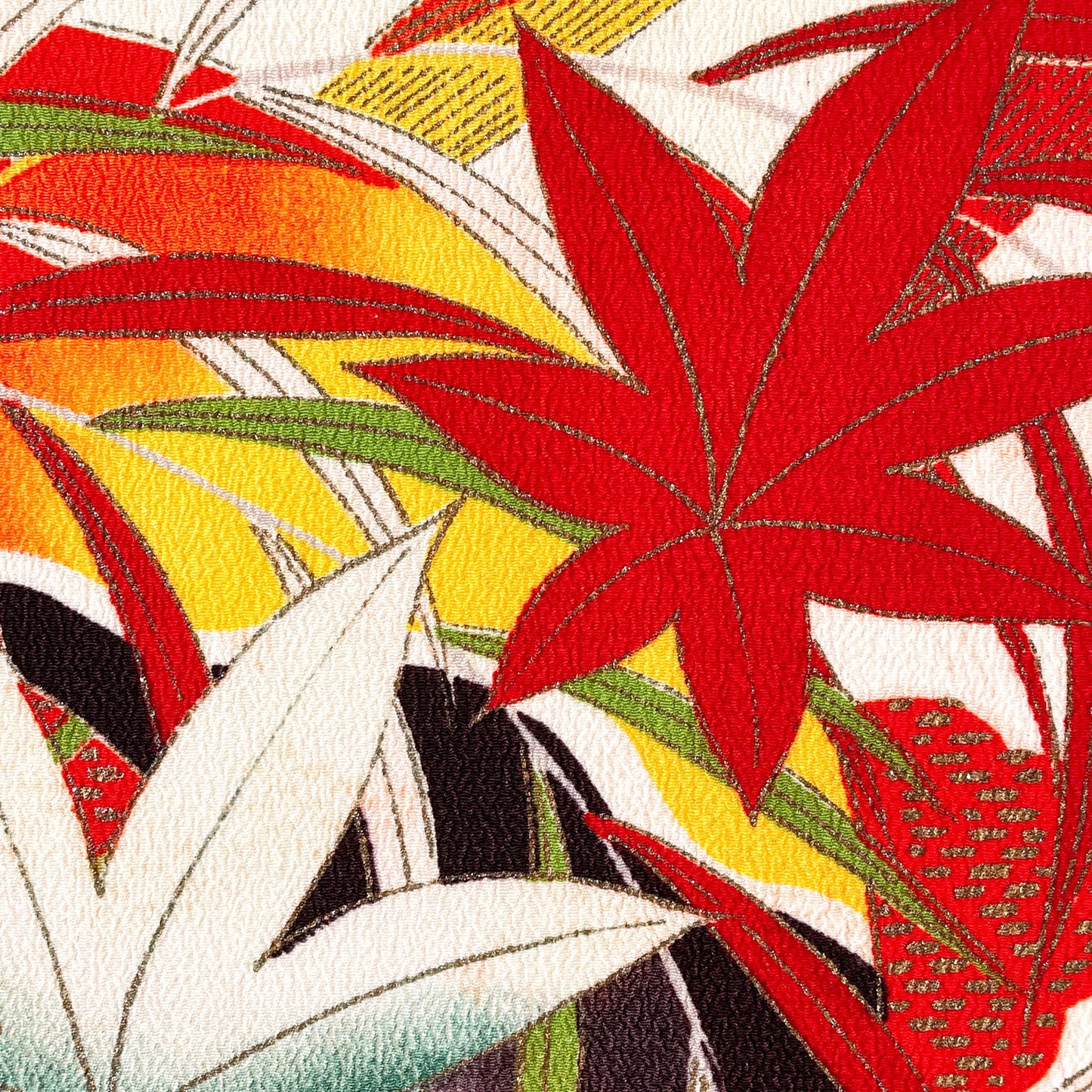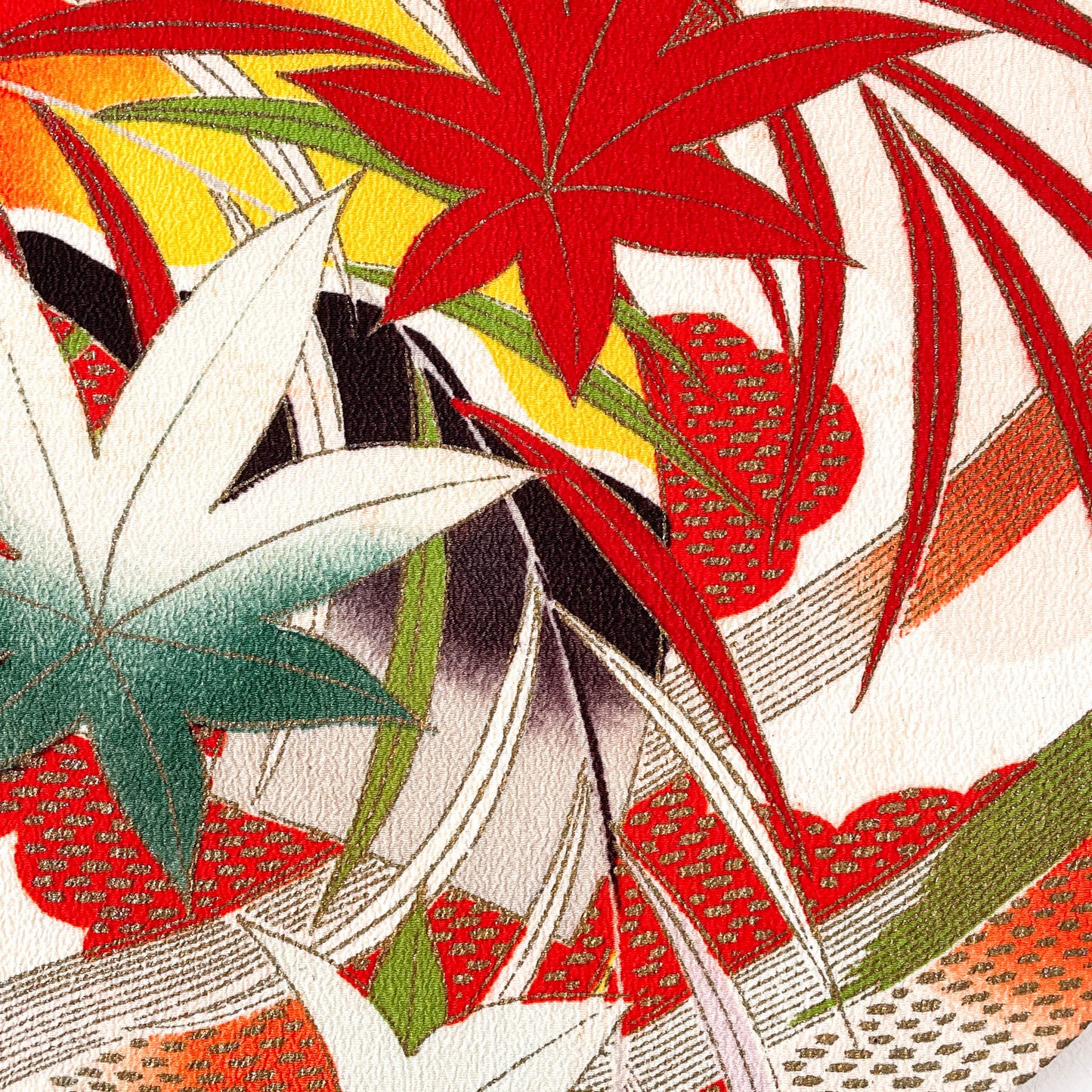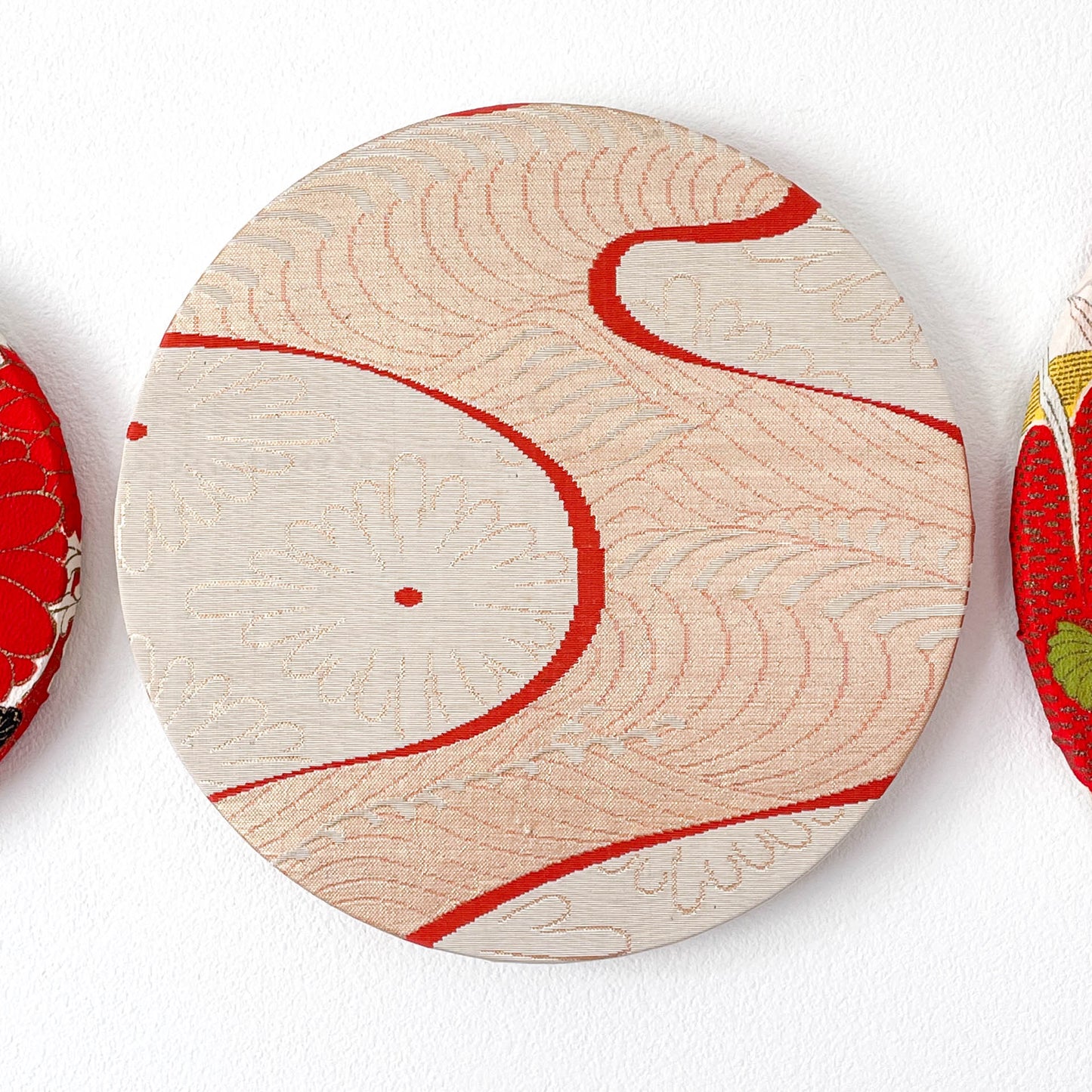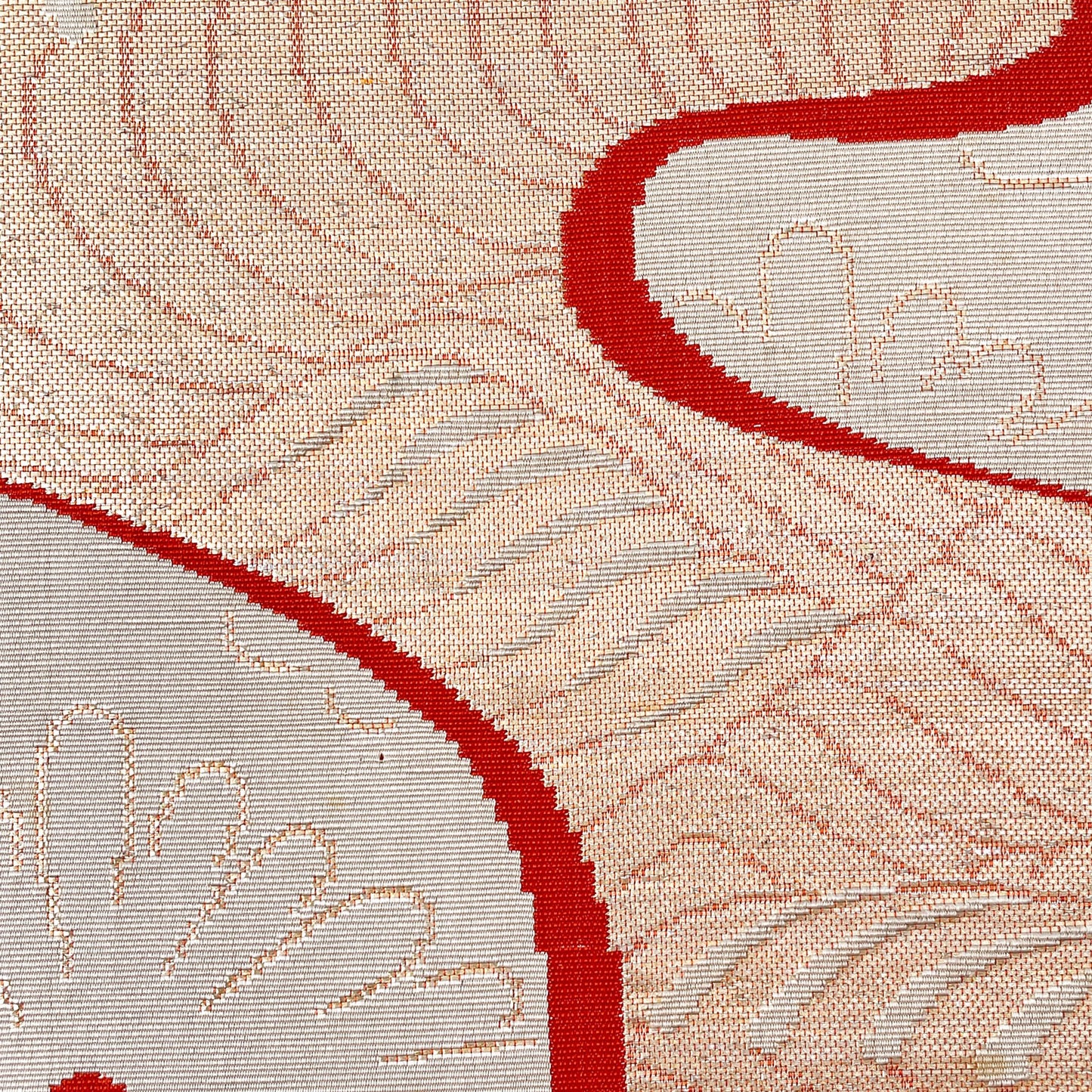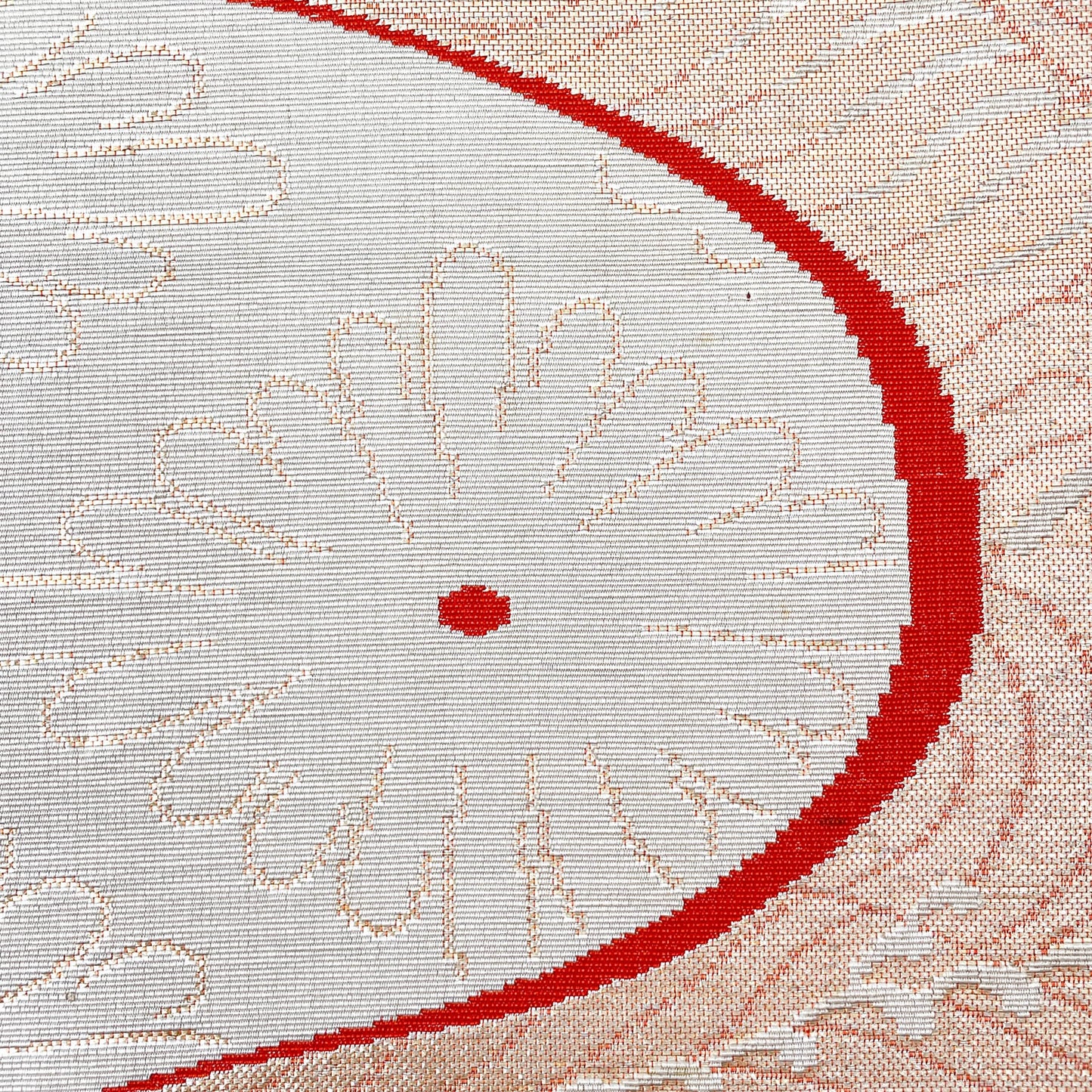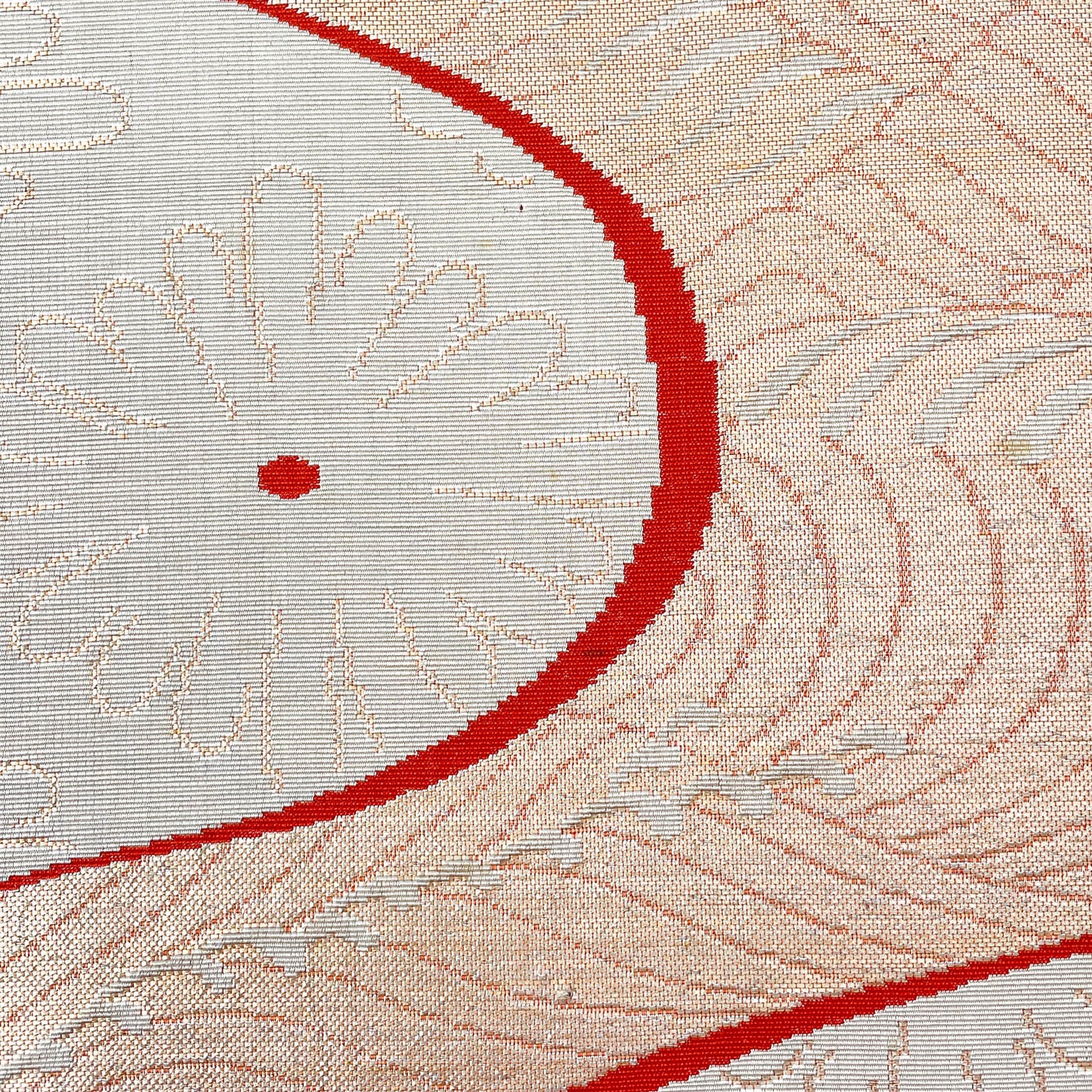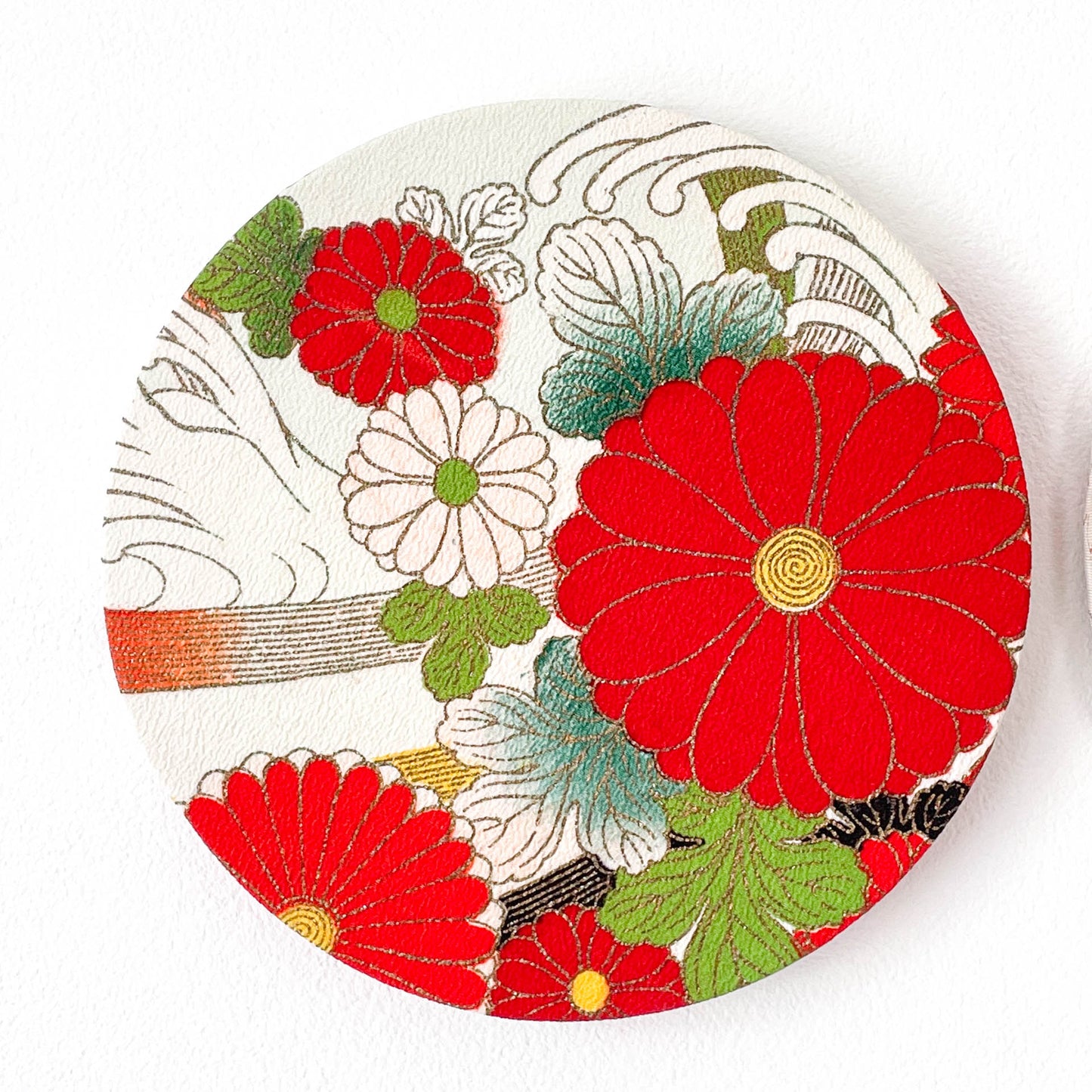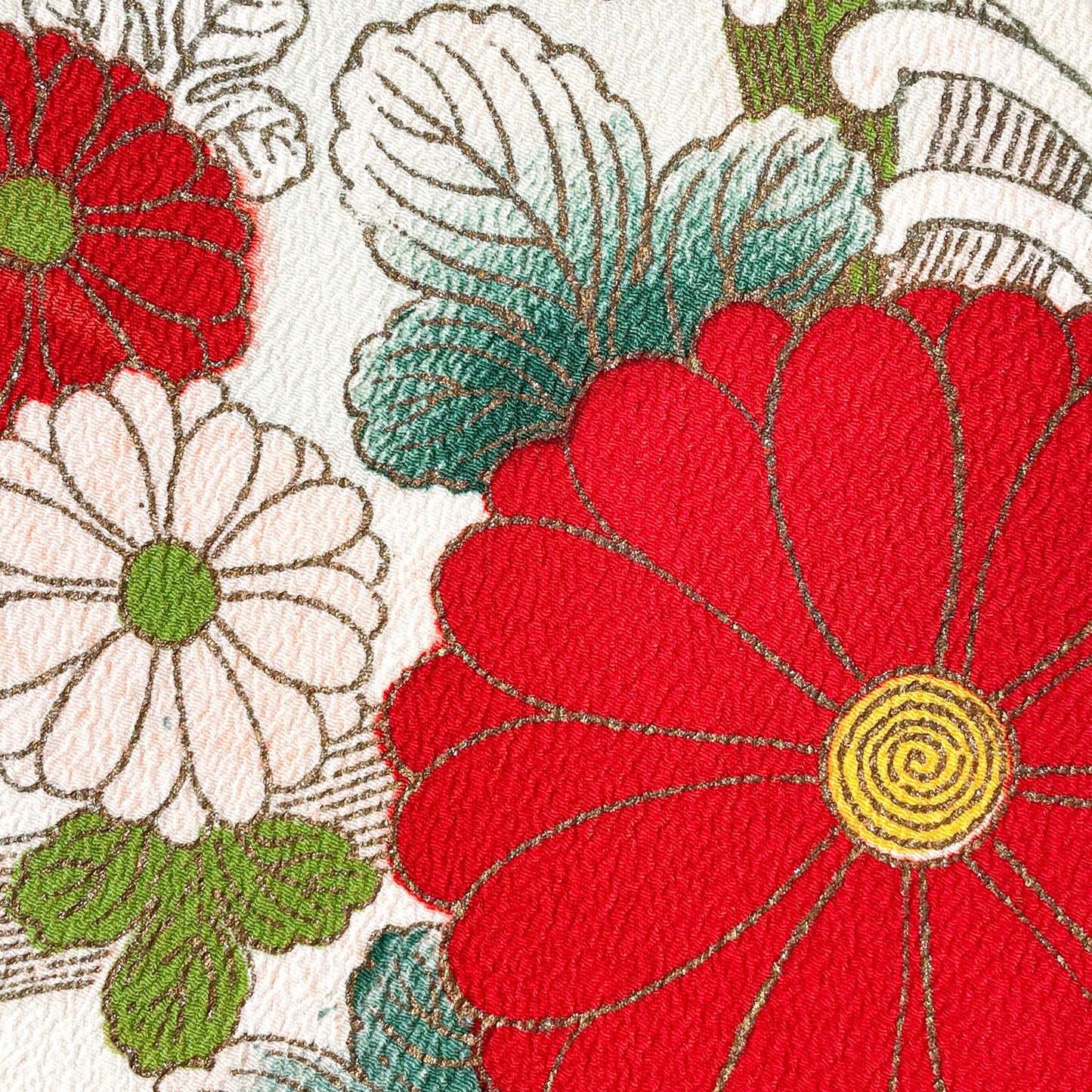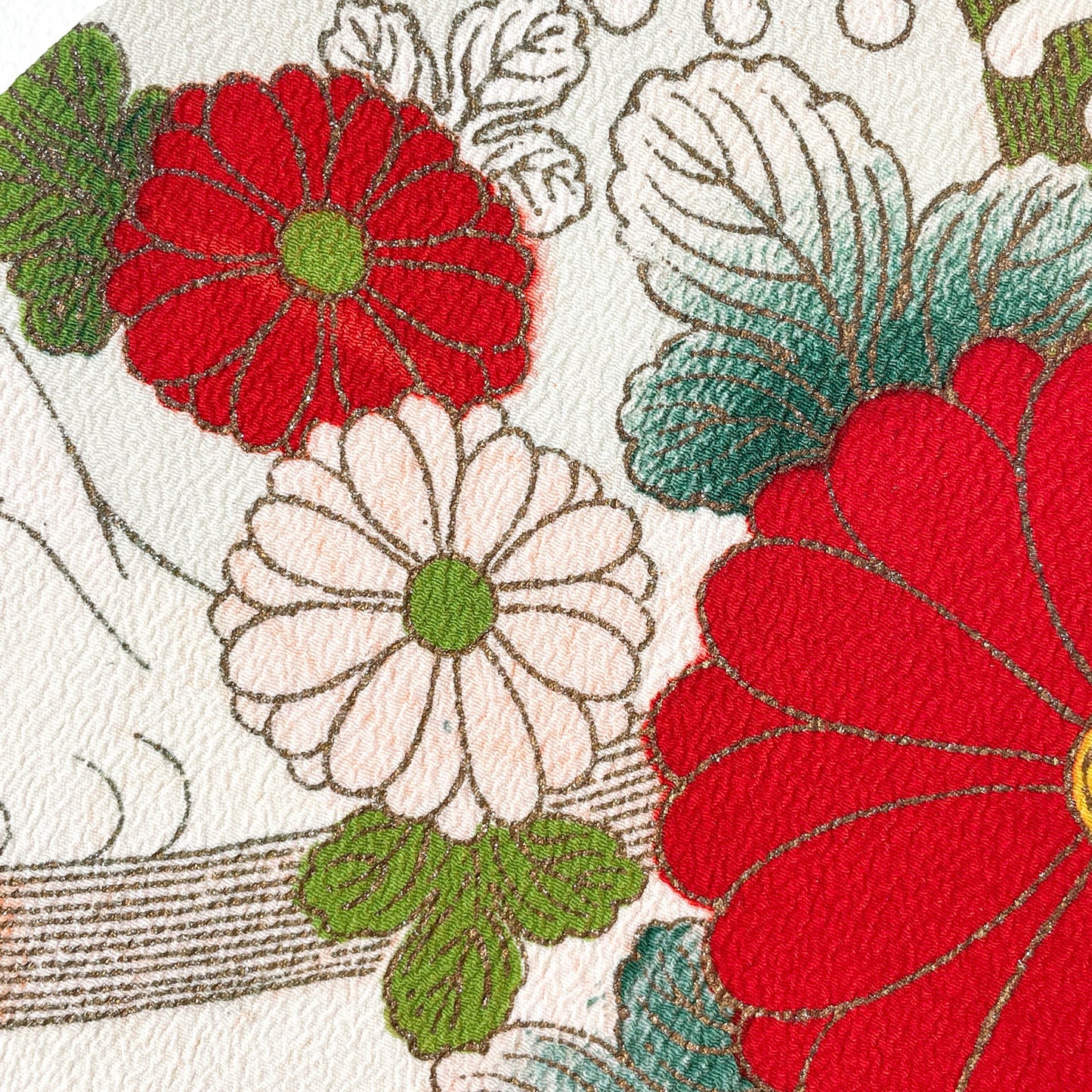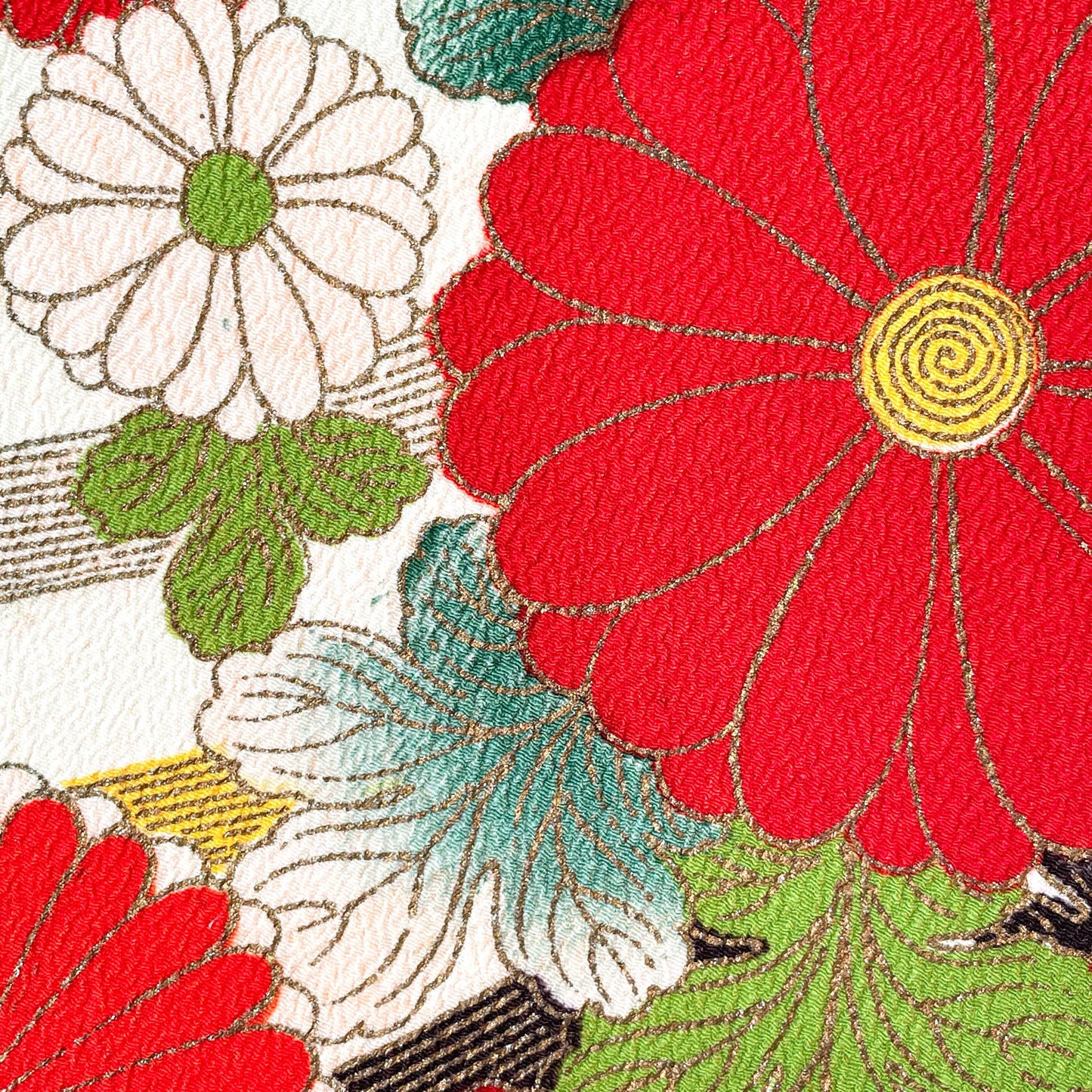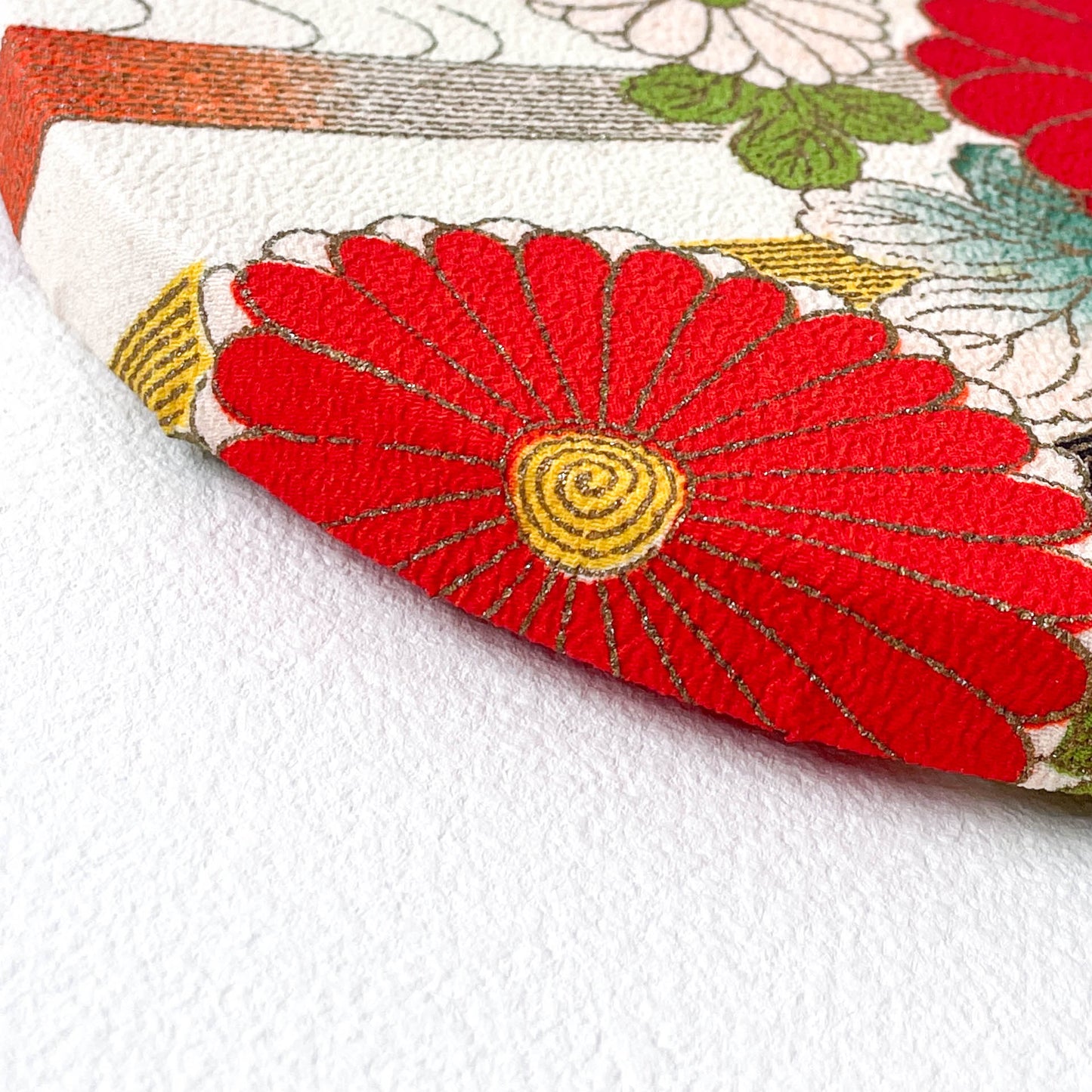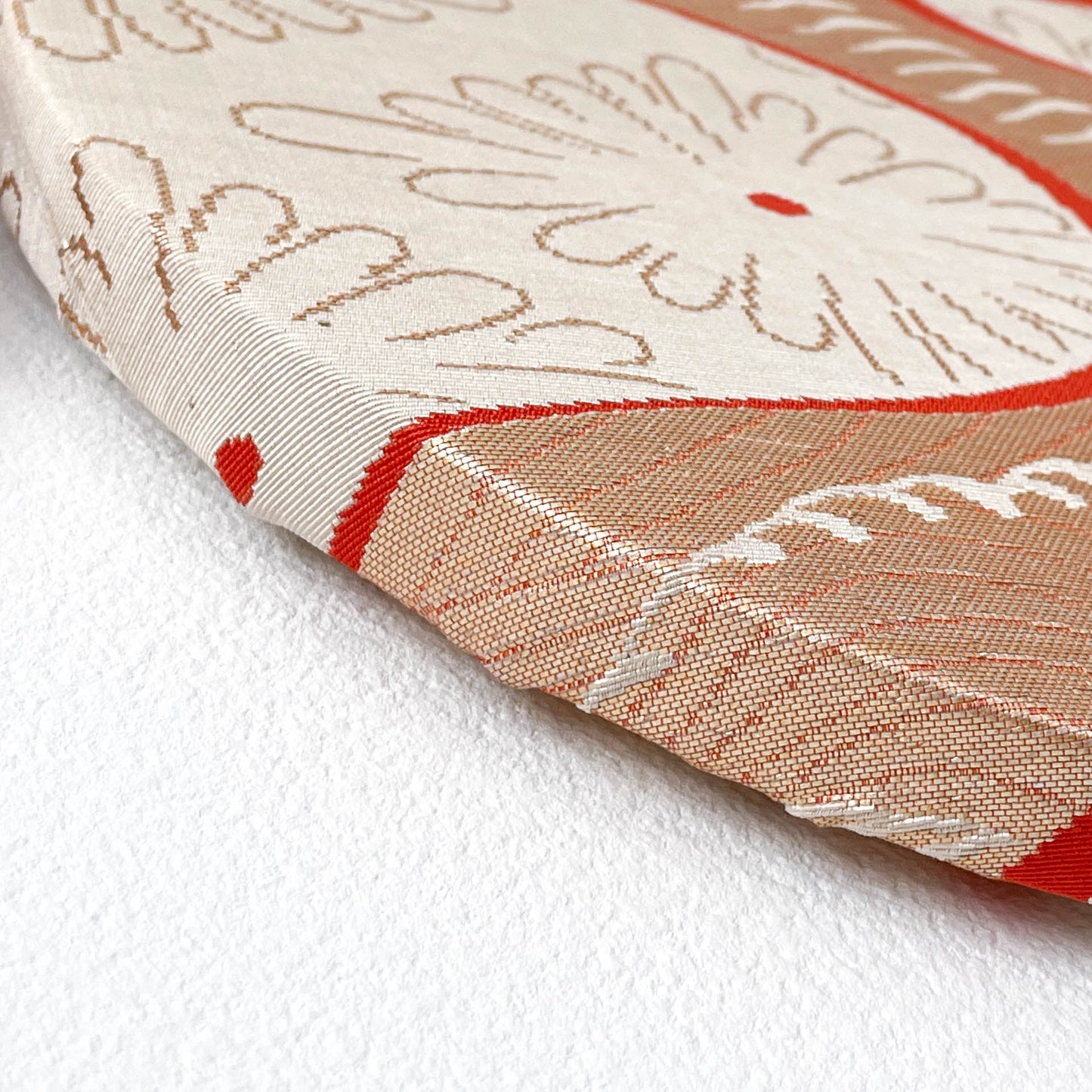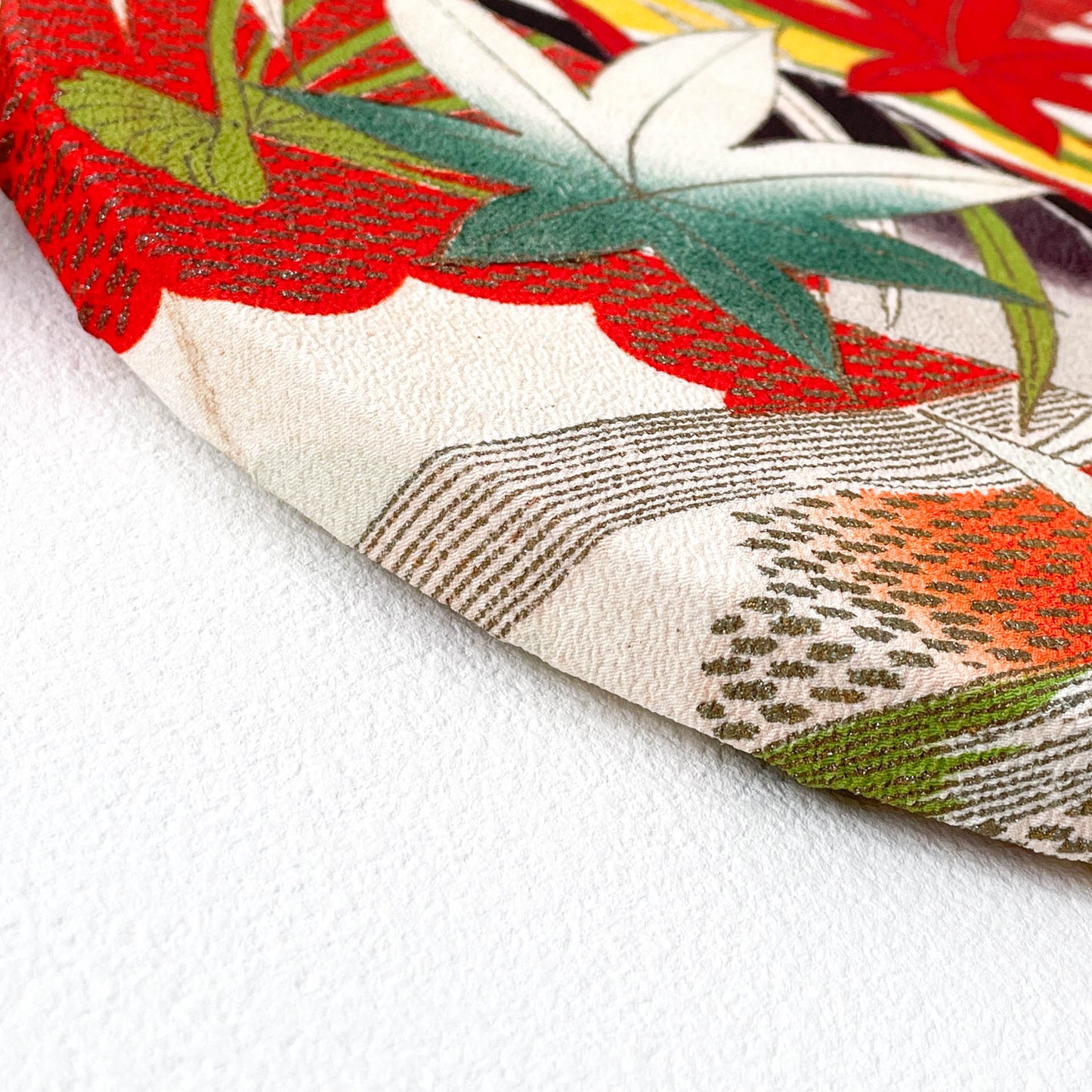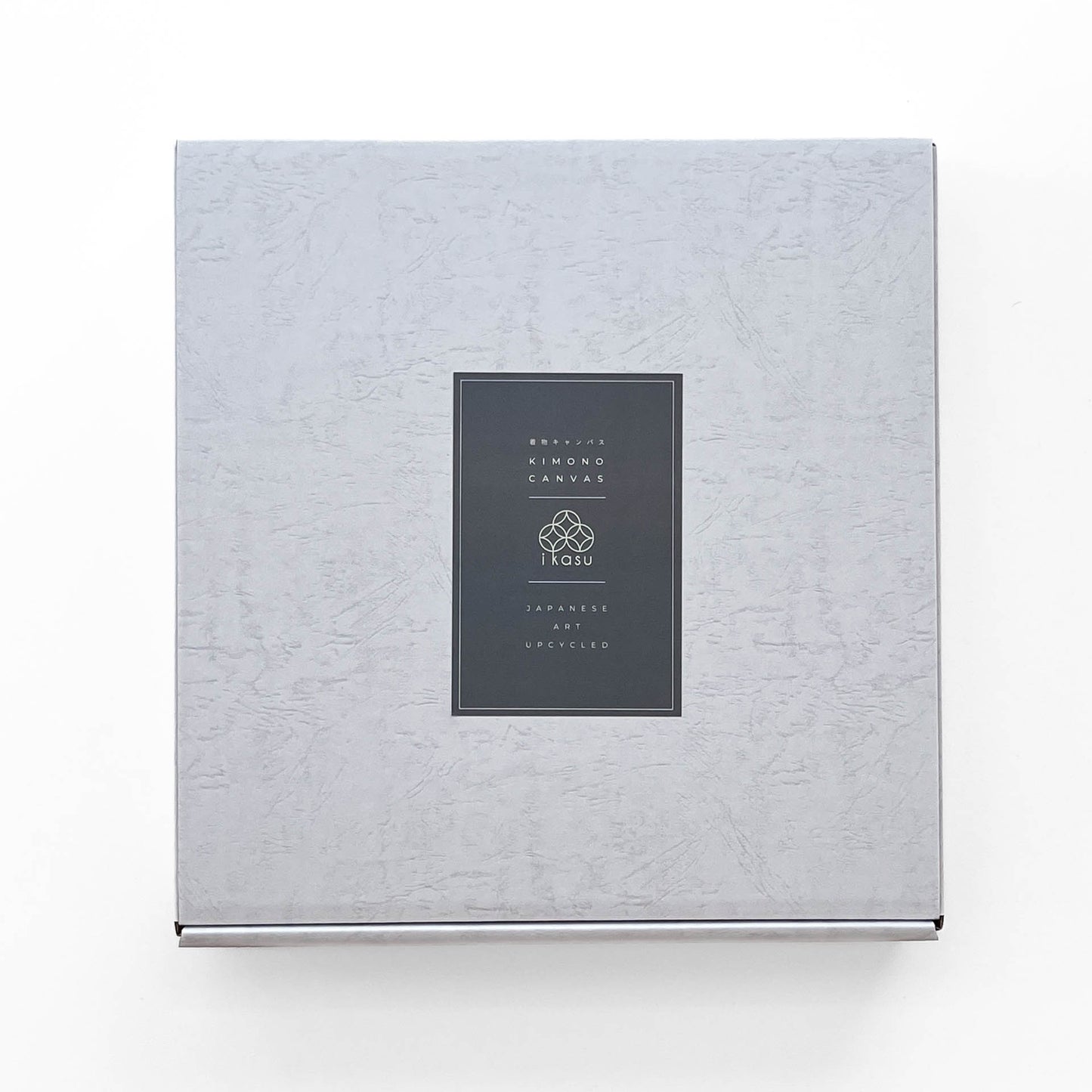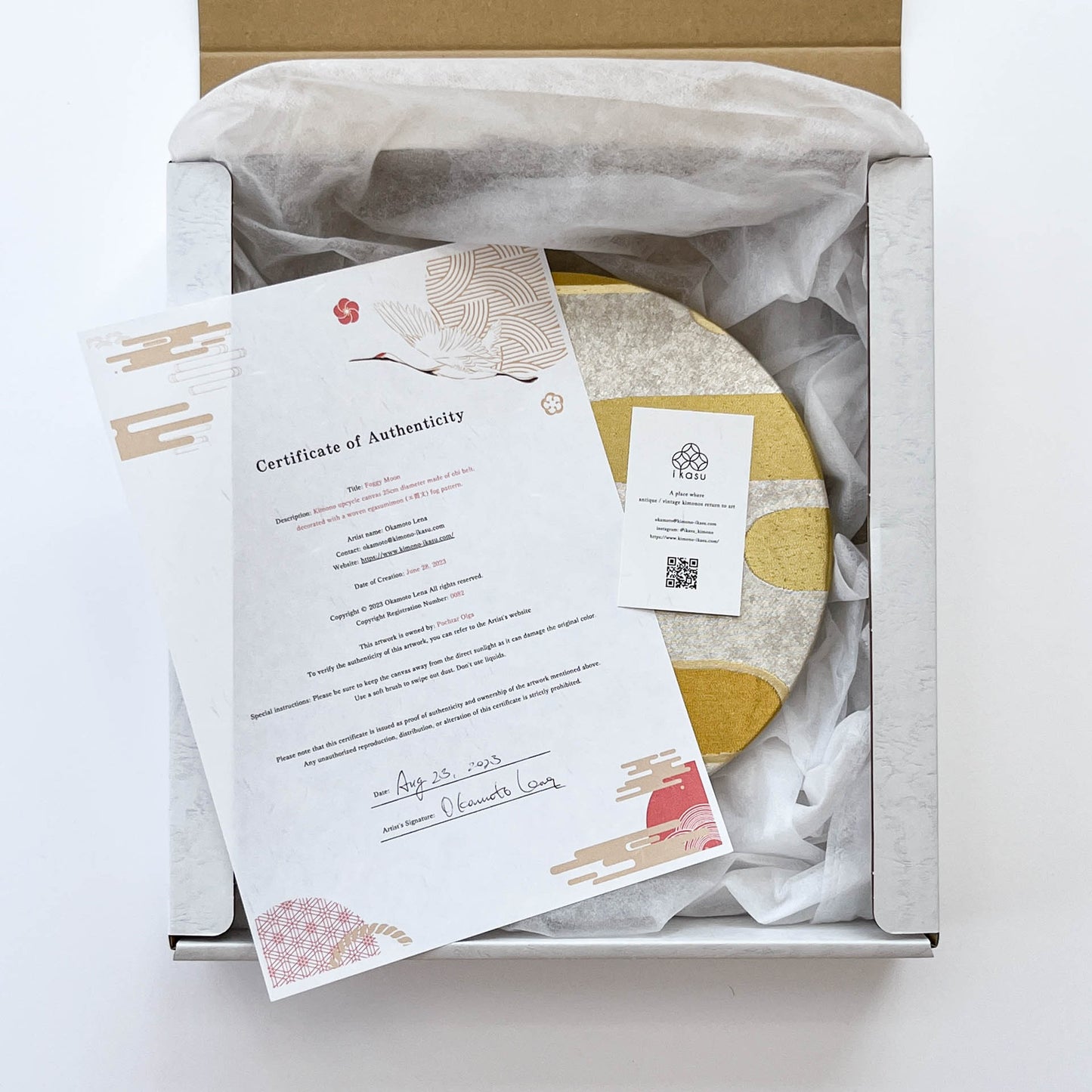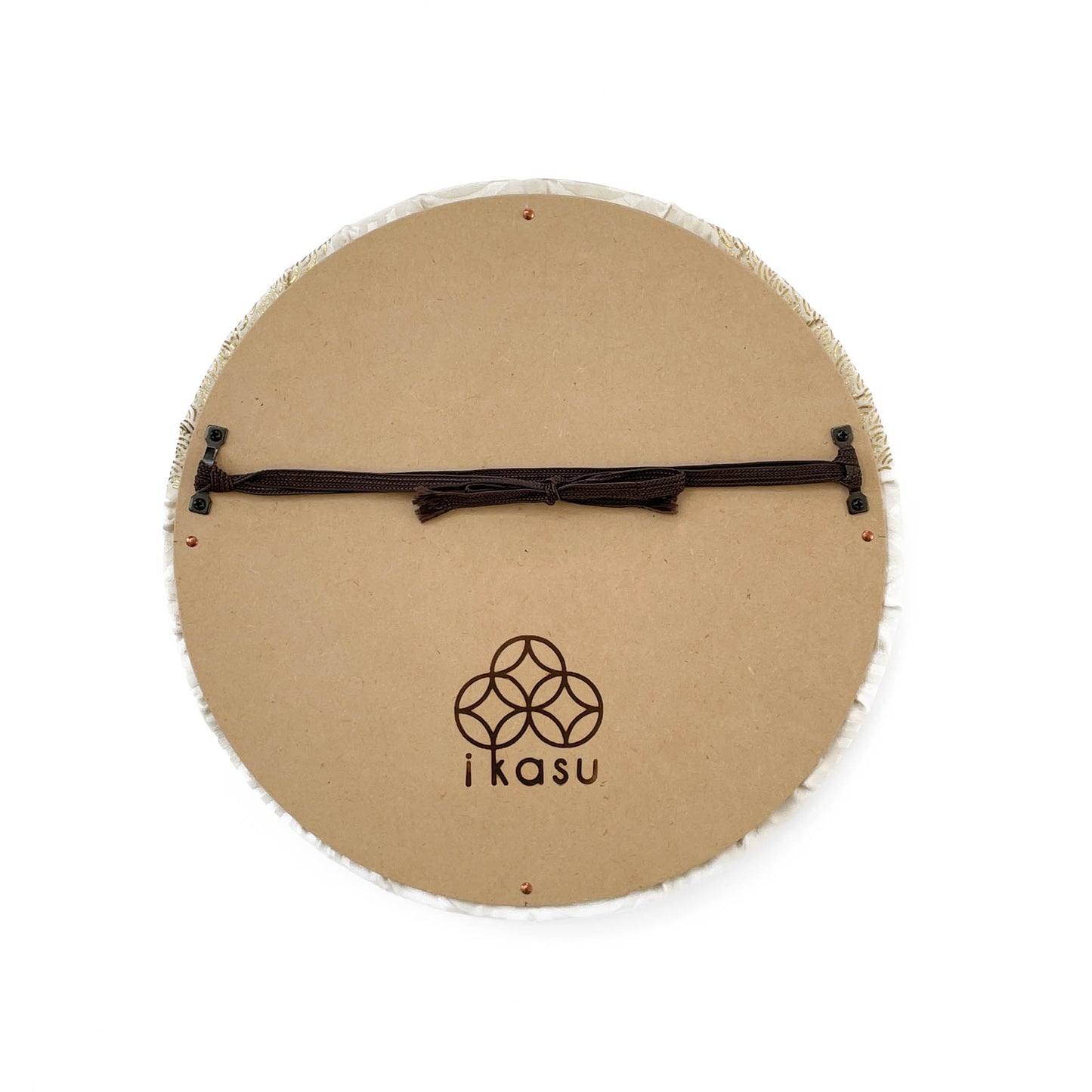Autumn Flow ~Serenity~
Autumn Flow ~Serenity~
無法載入取貨服務供應情況
Size
Diameter approx. 30cm, 25cm, 20cm x 2cm (3 items).
Materials
silk (outside-layer) , wooden frame, cotton linen canvas (under-layer)
About this canvas
The canvases on the right and left are crafted from kimono fabric adorned with red and white chrysanthemums that seem to float on the waves. In contrast, the middle canvas is made from an obi (a kimono belt) woven with patterns of waves and chrysanthemums in the river.
Period / Story
The kimono used for this canvas was created and worn during the late Showa period (1960-80ies).
Explanation and meaning of pattern and colors
The left and right canvases feature a delightful red and white chrysanthemum pattern with a rounded silhouette. The red and white colors symbolize auspiciousness and a bright future.
The chrysanthemum flower, which retains its beauty long after being cut, is a symbol of longevity, purification of negative energies, and a sign of good fortune. In ancient times, the chrysanthemum pattern was favored by the emperors during the Kamakura period (1185-1333) and remains the most prestigious flower pattern and emblem of the Japanese imperial family today.
The background of the entire furisode displays an ancient five-color wave pattern. These five colors include blue, red, yellow, white, and black. However, due to historical dye variations and color perception, blue was often represented as green, and black as purple. As a result, the colors may actually appear as green, red, yellow, white, and purple.
The use of these five colors originates from ancient Chinese principles of Yin-Yang and the five elements and is deeply intertwined with Japanese culture. These colors are still commonly used today for various decorations, primarily to ward off malevolent spirits.
The canvas featured in the middle is made of obi woven with a motif of chrysanthemums and intersecting waves within the flowing water pattern's curves, creating a bold and modern impression.
Chrysanthemum flowers are designed in a diamond shape or filled with chrysanthemum blossoms within a diamond shape, collectively known as a "kikubishi" pattern.
The pattern of chrysanthemum flowers floating in flowing water is known as "kikusui" and has been recognized since ancient times as a symbol of longevity, inspired by a Chinese legend that drinking water flowing from a chrysanthemum grove could extend one's life.
The waves, which come and go repeatedly, represent auspicious concepts like eternity, immortality, longevity, and birth. The chrysanthemums floating among the waves also symbolize longevity, making this canvas a rich collection of positive and meaningful motifs.
Characteristics of the fabric
On the left and right canvases the chrysanthemums and waves are dyed in kata-yuzen traditional print. The bright colors, including the eye-catching red of the chrysanthemums, are exquisitely balanced by the blending of the waves and chrysanthemum leaves in various places.
The distinctive line drawings in smoked silver, reminiscent of the threads that form the edges of the dyeing process, beautifully complement the white margins.
The wave caps of the waves on the canvas in the center are expressed in a three-dimensional weave as if they were splashing.
The golden waves, woven in gold, shine in the light and shine brightly.
Decoration Advice
Canvas can be displayed on a table, wall, etc. Hanging on a wall requires hooks, tacks or nails. It can also be displayed propped up on an easel. Ideal for a room makeover, housewarming gift, present, or souvenir for a loved one.
Precaution
All the works are made from real kimonos, antiques and vintages. For this reason, the fabric may have traces of long-term use and minor fabric damages. In case there are any scratches or stains, we always add a photo of the area on the item page, so please check before purchasing. Regarding precaution, cancellation and refund policy, please refer to the refund policy in the footer section of the site for information.
The last pictures in the gallery are the pictures of the reverse side of the canvas and the package.
